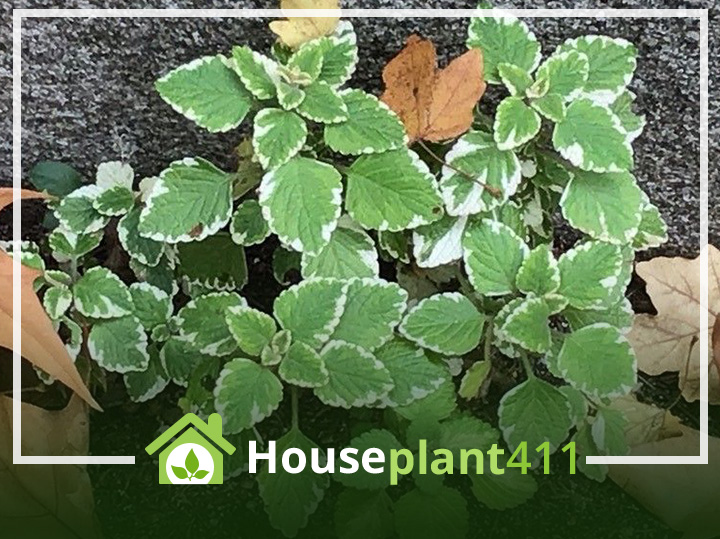Swedish Ivy, Plectranthus verticillatus, is a flowering plant native to South Africa. It’s also known as creeping Charlie or silver moss. The plant gets its name from its ability to climb up walls and other structures using tiny tendrils that grow out of the stem. These tendrils can grow up to 10 feet long!
In terms of appearance, Swedish ivy has dark green leaves with serrated edges and small white flowers that bloom in clusters at the ends of each stem during summertime (June through August).
In this article, we take a look at Swedish Ivy Plant Benefits. These benefits can help you understand why you should have them in your home.
Benefits of Swedish Ivy
Swedish Ivy, also known as Plectranthus verticillatus, is a popular indoor plant found in many homes. It’s easy to care for and has many benefits that make it worth growing.
Benefits of having Swedish Ivy indoors:
- Air purifying capabilities – Swedish ivy is one of the best plants for removing formaldehyde from your home’s air. Formaldehyde is a chemical used in furniture manufacturing that can cause respiratory problems if you breathe too much of it over time. If you have this plant in your home or office, you’ll be breathing easier knowing that it’s helping remove some of those harmful chemicals from your environment.
- Stress reduction – Swedish ivy has been shown to reduce stress levels by releasing serotonin into the body when touched or massaged. This makes it great for people who suffer from anxiety or depression because they often feel better after spending time around nature.
Health Benefits of Swedish Ivy
Swedish ivy is a green, leafy plant that can be used to treat many health problems. The leaves are rich in vitamins A and C, which help boost the immune system and fight infections. They also contain minerals such as iron and magnesium that help improve blood circulation.
Swedish ivy has been used for centuries by herbalists to treat skin conditions like psoriasis and eczema because it contains tannins that have anti-inflammatory properties. It’s also an antioxidant which means it helps protect cells from damage caused by free radicals (elements produced during normal metabolic processes).
Caring for Swedish Ivy
Swedish ivy is a fast-growing, evergreen vine that can be trained to climb up walls or trellises. It’s also known for its ability to grow in containers and hanging baskets.
If you want to grow Swedish ivy in your garden, it’s important to keep these things in mind:
Watering:
Water your plant regularly during the growing season (spring through fall). It needs about 1 inch of water per week. In wintertime, give it less frequent but deeper watering–about once every two weeks–to help keep its roots from drying out completely.
Temperature:
Keep Swedish ivy indoors at temperatures between 60- and 70-degrees Fahrenheit; move it outside when temperatures are above 50 degrees Fahrenheit but below 80 degrees Fahrenheit; bring it back inside if there’s a danger of frost or freezing temperatures at nightfall.
Humidity:
Keep humidity levels high by misting plants daily with tepid water until they’re acclimated to their new environment.
Light Requirements:
Place Swedish ivy where it will receive bright light without direct sun exposure; this may mean moving it indoors during winter months when days are shorter than 12 hours long (or moving outdoors again when days lengthen).

Design Ideas for Swedish Ivy
Swedish ivy is a versatile plant, and can be incorporated into many different design schemes. It’s great for adding a pop of green to your space, but it also works well in more formal settings as well as more natural environments. Here are some ideas for using Swedish Ivy:
Use it as an accent piece by placing one or two plants in a pot on your coffee table or desk. You can also use them to create living walls that add color and texture to any room!
If you want something bigger than just one or two plants, try creating an entire wall made out of Swedish Ivy! This will give the illusion that you’re living in an enchanted forest–and who wouldn’t want that?
Garden Uses for Swedish Ivy
Swedish ivy is a fast-growing, evergreen perennial that can be used as a ground cover or in hanging baskets. It also makes an attractive addition to your outdoor garden, where it will grow well in full sun or partial shade.
Swedish ivy thrives in most soil types and prefers moist but well-drained soil with a pH range of 6.0 to 7.5 (acidic). In fact, this plant is so hardy that it can tolerate temperatures as low as -30 degrees Fahrenheit (-34 Celsius).
Harvesting and Propagating Swedish Ivy
Swedish ivy is a perennial plant that can be harvested and propagated at any time of the year. The best time to harvest Swedish ivy is in the spring when it has just begun to grow. Harvesting should take place before any new leaves have appeared on your plants, as this will ensure that they have had enough time to establish themselves in their new location.
If you want to propagate your own Swedish ivy plants, simply cut off one or two stems from each plant with a sharp pair of scissors or pruning shears (make sure not to damage any roots!). Place these stems into water until they root; this may take anywhere from one day up until several weeks, depending on how long your stem was cut from its mother plant and how much light it receives every day during this process. Once rooted properly, transplant into the soil once again!
Conclusion
Swedish ivy plants are a great addition to any garden, as they can help you save money and time. They require little maintenance, which means you don’t have to spend much time watering or pruning them. Additionally, Swedish ivy doesn’t need direct sunlight in order to grow well; it will grow in partial shade as well as full sun!
If you’re looking for an easy-to-care-for plant that will add some color and beauty to your yard or garden without taking up too much space, then Swedish Ivy is definitely worth considering!

